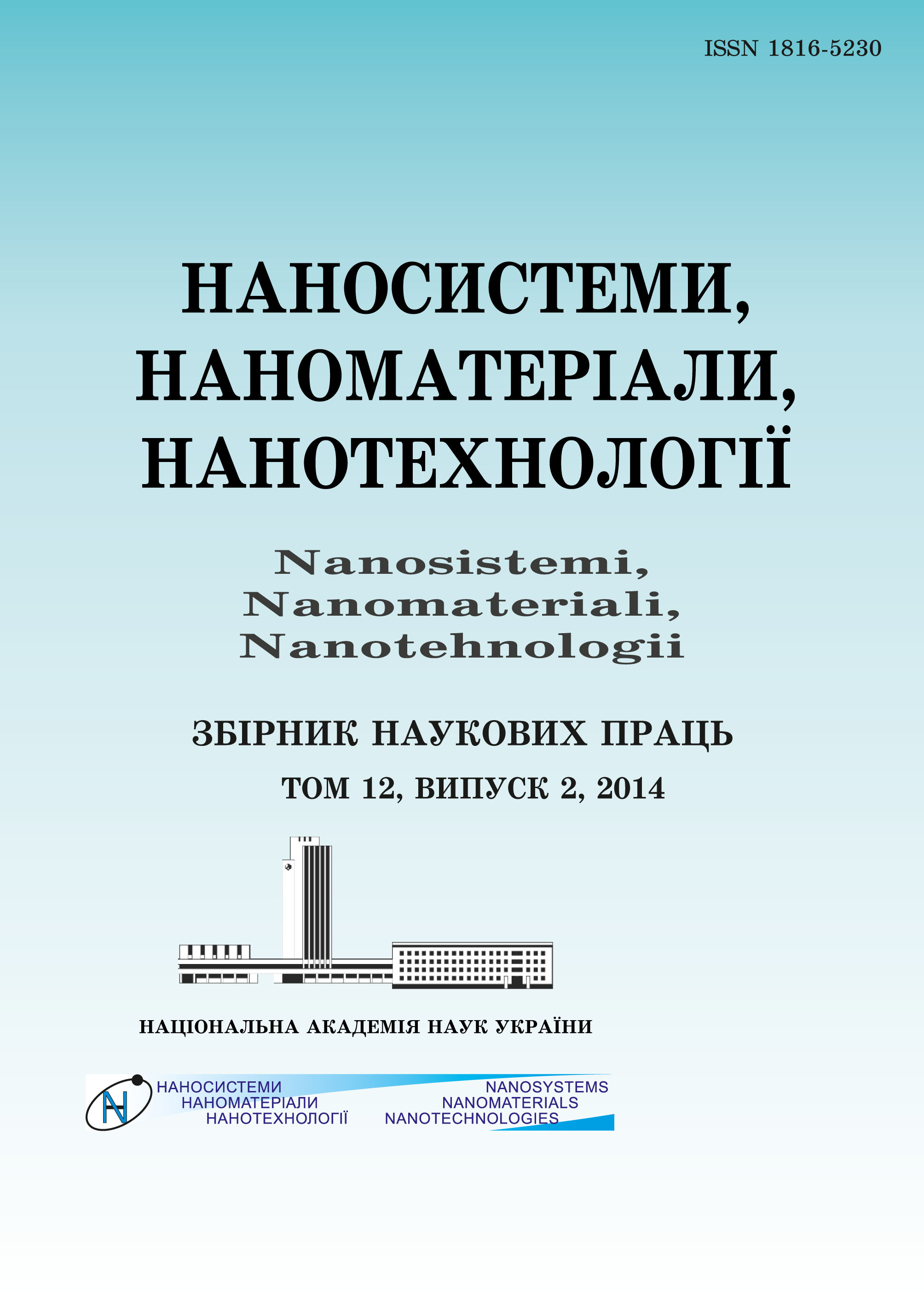|
|
|||||||||

|
Year 2025 Volume 23, Issue 2 |
|
|||||||
|
|||||||||
Issues/2025/vol. 23 /issue 2 |
|
Abeer Adnan ABD1 and Zainab S. AL-KHAFAJI2,3
1Polymer Department, College of Materials Engineering, Babylon University, Hillah, Babil, Iraq
2Department of Civil Engineering, Faculty of Engineering and Built Environment, Universiti Kebangsaan Malaysia, 43600 UKM Bangi, Selangor, Malaysia
3Imam Ja’afar Al-Sadiq University, Qahira, Baghdad, Iraq
Study of Nano-Titanium-Dioxide Effect on Mechanical, Thermal, and Morphological Properties of Polypropylene–Low-Density Polyethylene Blend
591–602 (2025)
PACS numbers: 62.23.Pq, 62.25.Mn, 68.37.Hk, 78.30.Jw, 81.70.Bt, 81.70.Pg, 83.80.Tc
The study is aimed to improve the mechanical and thermal properties of a low-density polypropylene–polyethylene blend mixed at 80–20 wt.%. Titanium dioxide is added at different percent ratios: 0, 2, 4, 6, 8 wt.%. Particle sizes and melt processing of the low-density polyethylene–polypropylene blending play a significant role in thermoplastic arrangements. The composite material is prepared using the composite by the melt mixing technique in a screw extruder. The results show that the mechanical properties are improved, when TiO2 particles are added at an average particle size of 0.201. The tensile strength and hardness increase with the increase in filler content. The tensile modulus increases due to the higher surface area of the filler. The bending strength decreases due to the decrease in elasticity and the increase in tensile strength. The impact strength decreases by 2% and then increases. FT-IR results show the physical bonds between the filler particles and the blend. DSC-test results indicate two glass transition temperatures, making the blend immiscible. SEM results show that ethylene–propylene–diene monomer (EPDM) rubber (as a type of synthetic thermoset elastomeric copolymers produced from a terpolymer of ethylene, propylene and a diene monomer) coupling agents enhance the adhesion between the titanium dioxide and the blended composite.
KEY WORDS: titanium dioxide, polypropylene, polyethylene, blend, EPDM
DOI: https://doi.org/10.15407/nnn.23.02.0591
REFERENCES
- N. S. Radhi and Z. S. Al-Khafaji, Proc. 6th International Scientific Conference on Nanotechnology, Advanced Materials and Its Applications (May 13–14, 2018, Iraq), p. 1–9.
- S. Sattar, Y. Alaiwi, N. S. Radhi, Z. Al-Khafaji, O. Al-Hashimi, H. Alzahrani, and Z. M. Yaseen, J. King Saud Univ. Sci., 35, No. 8: 102861 (2023); https://doi.org/10.1016/j.jksus.2023.102861
- N. M. Dawood, N. S. Radhi, and Z. S. Al-Khafaji, Mater. Sci. Forum, 1002, No. 1: 33 (2020); https://doi.org/10.4028/www.scientific.net/MSF.1002.33
- N. S. Radhi, H. H. Jamal Al-Deen, R. Safaa Hadi, N. Al-Ghaban, and Z. S. Al-Khafaji, J. Nanostruct., 14, No. 1: 1 (2024); https://jns.kashanu.ac.ir/article_113861.html
- A. J. Salman, Z. F. Jawad, R. J. Ghayyib, F. A. Kareem, and Z. Al-Khafaji, Energies, 15, No. 18: 6808 (2022); https://doi.org/10.3390/en15186808
- H. A. Sallal, M. H. Mahboba, M. S. Radhi, A. Hanif, Z. S. Al-Khafaji, S. Ahmad, and Z. M. Yaseen, J. King Saud Univ. Sci., 36, No. 2: 103061 (2024); https://doi.org/10.1016/j.jksus.2023.103061
- A. M. Humad, A. J. Dakhil, S. A. Al-Mashhadi, Z. Al-Khafaji, Z. A. Mohammed, and S. F. Jabr, Res. Eng. Struct. Mater., 10, No. 1: 1 (2024); http://dx.doi.org/10.17515/resm2023.43me0806rs
- I. A. U. Kadhim, H. A. Sallal, and Z. S. Al-Khafaji, ES Mater. Manuf., 21, No. 1: 828 (2023); https://dx.doi.org/10.30919/esmm5f828
- A. H. Jasim, N. S. Radhi, N. E. Kareem, Z. S. Al-Khafaji, and M. Falah, Open Eng., 13, No. 1: 20220472 (2023); https://doi.org/10.1515/eng-2022-0472
- N. S. Radhi, A. H. Jasim, Z. S. Al-Khafaji, and M. Falah, Nanosistemi, Nanomateriali, Nanotehnologii, 21, Iss. 4: 769 (2023); https://doi.org/10.15407/nnn.21.04.769
- N. D. Fahad, N. S. Radhi, Z. S. Al-Khafaji, and A. A. Diwan, Heliyon, 9, No. 3: 14103 (2023); https://doi.org/10.1016/j.heliyon.2023.e14103
- S. Sattar, Y. Alaiwi, N. S. Radhi, and Z. Al-Khafaji, Acad. J. Manuf. Eng., 21, No. 4: 86 (2023); https://ajme.ro/current_issue.php
- E. Mohammed and Z. Al-Khafaji, Acad. J. Manuf. Eng., 21, No. 3: 1 (2023); https://ajme.ro/content.php?vol=21&year=2023&issue=3&offset=0
- M. Awang and W. R. Wan Mohd, IOP Conf. Ser.: Mater. Sci. Eng., 342, Iss. 1: 012046 (2018); https://doi.org/10.1088/1757-899X/342/1/012046
- C. Rosales, C. Bernal, and V. Pettarin, Polym. Test., 90, No. 1: 106598 (2020); https://doi.org/10.1016/j.polymertesting.2020.106598
- J. A. Vallejo-Montesinos, J. A. L. Martínez, J. A. Montejano-Carrizales, E. Perez, J. A. B. Pérez, A. A. Almendárez-Camarillo, and J. A. Gonzalez-Calderon, Mech. Mater. Sci. Eng., 8, No. 1: 1 (2017); https://doi.org/10.2412/mmse.96.48.950
- O. Kaymakci and N. Uyanik, Mater. Plast., 57: 309 (2020); https://doi.org/10.37358/Mat.Plast.1964
- B. Al-Zubaidy, N. S. Radhi, and Z. S. Al-Khafaji, Int. J. Mech. Eng. Technol., 10, No. 1: 776 (2019); https://cdnx.uobabylon.edu.iq/research/repository1_publication14452_28_816.pdf
- S. A. Hamza and N. S. Radhi, Acad. J. Manuf. Eng., 21, No. 1: 65 (2023); https://ajme.ro/content.php?vol=21&year=2023&issue=1&offset=0
- H. A. Sallal, M. S. Radhi, M. H. Mahboba, and Z. Al-Khafaji, Egypt. J. Chem., 55, No. 6: 197 (2023); https://doi.org/10.21608/EJCHEM.2022.154630.6684
- B. M. Rudresh, B. N. Ravikumar, and D. Madhu, Indian J. Adv. Chem. Sci., 4, No. 1: 68 (2016); https://ijacskros.com/artcles/IJACS-M174.pdf
- H. Jones, J. McClements, D. Ray, C. S. Hindle, M. Kalloudis, and V. Koutsos, Polym., 15, No. 21: 4200 (2023); https://doi.org/10.3390/polym15214200
- S. Daneshpayeh, F. Ashenai Ghasemi, and I. Ghasemi, Teh. Glas., 13, No. 3: 165 (2019); https://doi.org/10.31803/tg-20190312191013
 This article is licensed under the Creative Commons Attribution-NoDerivatives 4.0 International License ©2003 NANOSYSTEMS, NANOMATERIALS, NANOTECHNOLOGIES G. V. Kurdyumov Institute for Metal Physics of the National Academy of Sciences of Ukraine. E-mail: tatar@imp.kiev.ua Phones and address of the editorial office About the collection User agreement |